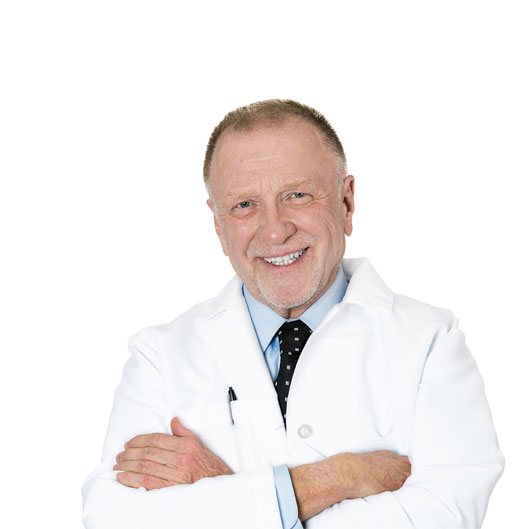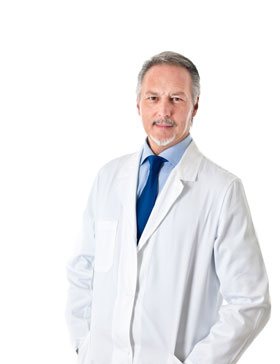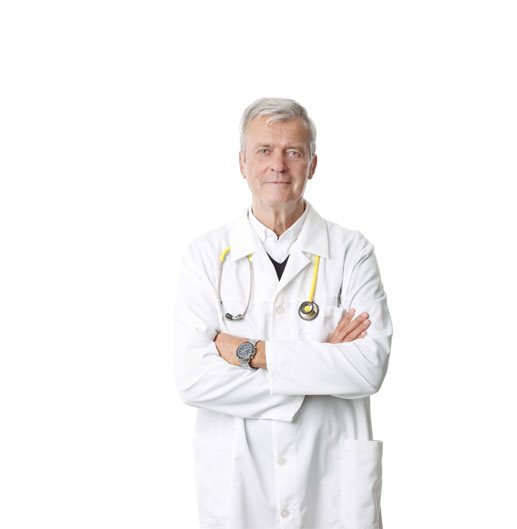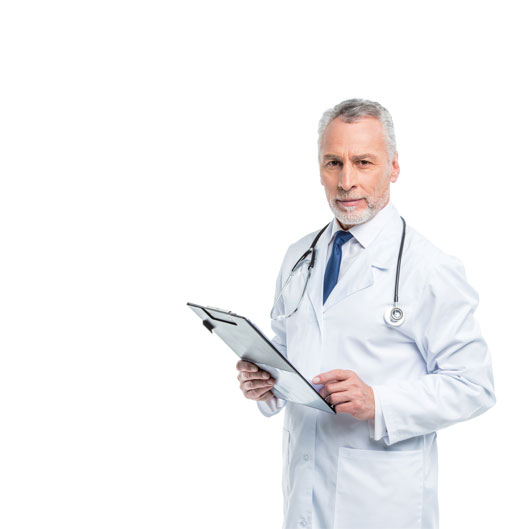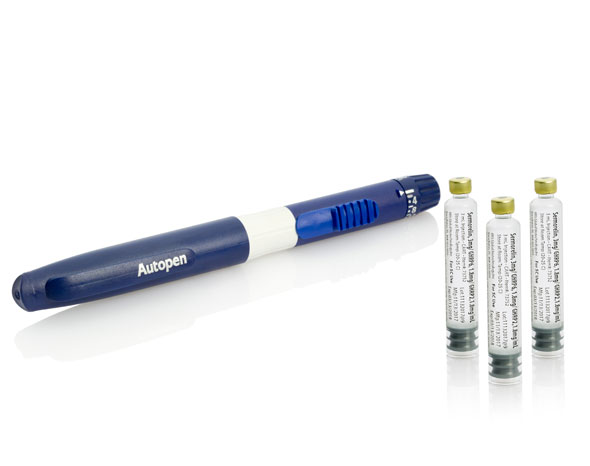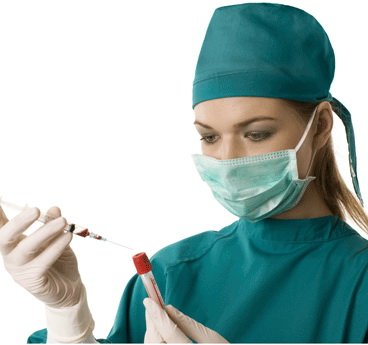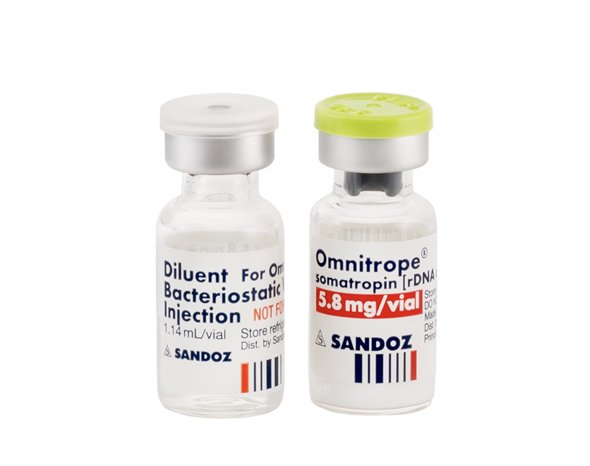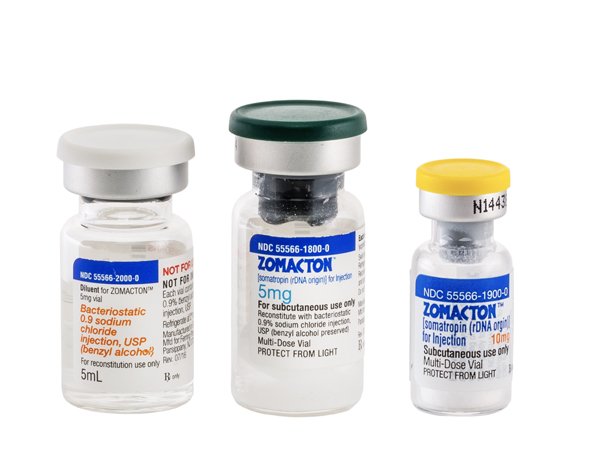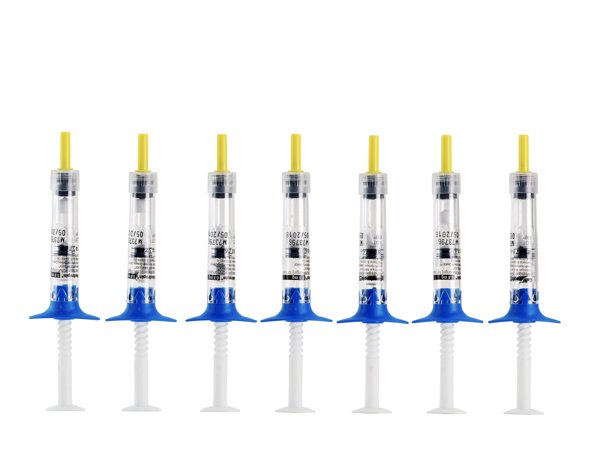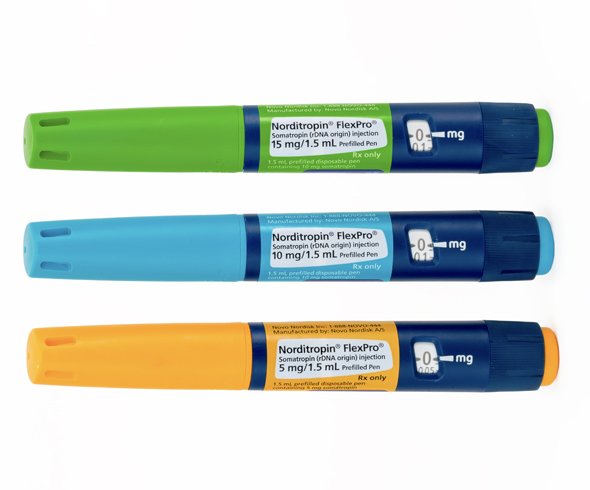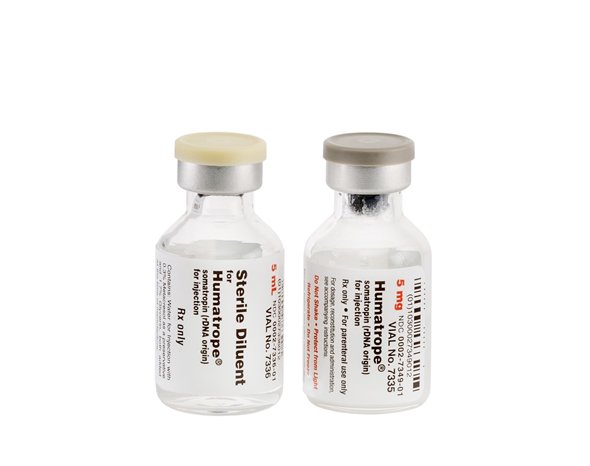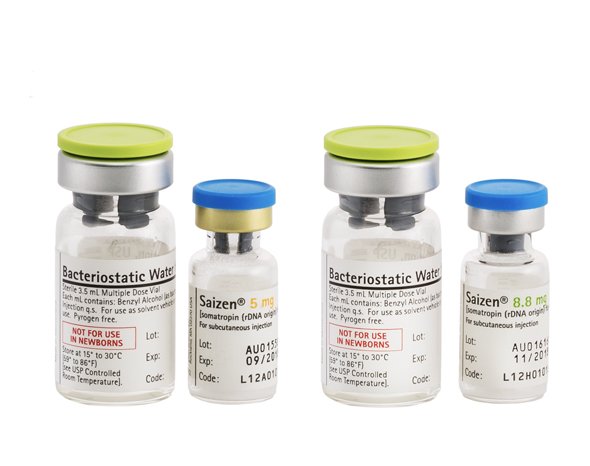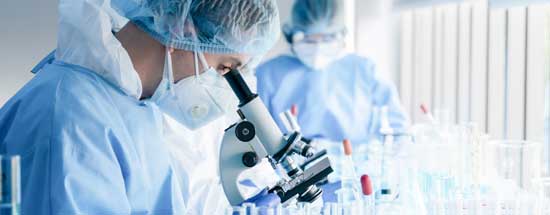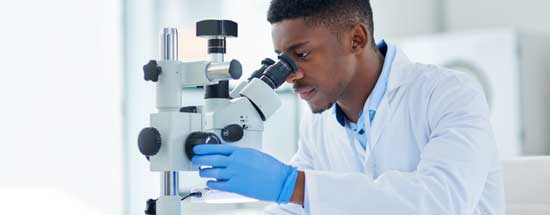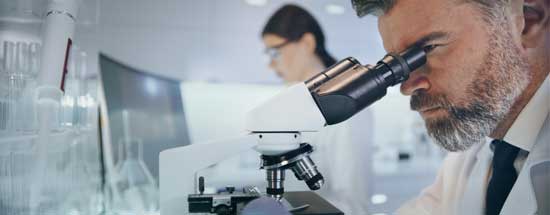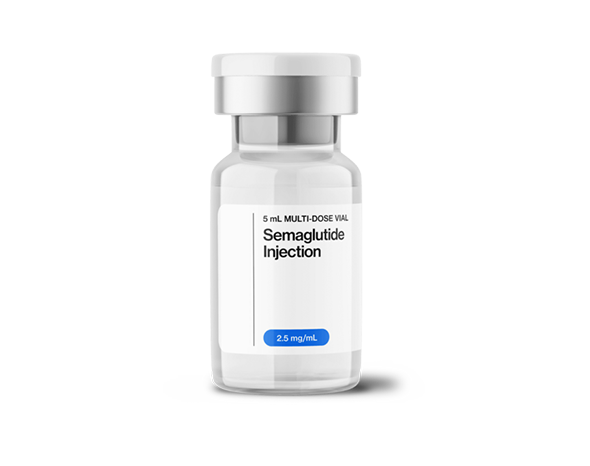- Home
- Growth Hormone
- Growth Hormone
- Growth Hormone Deficiency
- Growth Hormone Therapy
- Growth Hormone Injections
get startedThe Most Effective Hormone Replacement TherapiesKingsberg Medical Clinics provide the safest and most effective human growth hormone (HGH) replacement therapies and low testosterone treatments
Get Started
Growth Hormone Deficiency Treatment
Increase your energy! Take the first step to a stronger, slimmer, more vital you, with growth hormone replacement therapy.Low Testosterone Treatment
Stop missing out on doing the things you love in life because of low testosterone. Get started today, and see if you qualify for testosterone therapy.Blood Test for Growth Hormone & Testosterone Levels
It all starts with having your hormone levels checked and evaluated by our team of experts. Call today to schedule your appointment!Experience You Can Trust - Compassion You Can Count On
Kingsberg Medical specializes in the safest, most effective, medically proven, Growth Hormone & Testosterone Replacement therapies.
Over the past 10 years we have helped more than 14,000 men and women just like you, to increase energy, improve focus, and reignite passion, so that they can be their best at any age!Improve Your Health
Benefits of Growth Hormone Therapy
For men or women who are suffering from adult onset, or age-related growth hormone deficiency, growth hormone therapy can return quality of life to you. Growth hormone therapy has a remarkable number of positive benefits. Growth hormone therapy will help you lose weight, build more lean muscle, strengthen your bones, increase you energy, and improve heart health.- Increased energy and vitality - HGH Therapy boosts your metabolism, resulting in increased energy
- More lean muscle - HGH helps improves protein synthesis, which helps you build more lean muscle
- Lose weight, particularly belly fat - HGH therapy boosts your metabolism, which helps you burn fat better
- Better sleep - HGH is a hormone that is essential to regulating sleep
- Stronger bones - HGH is essential to bone health and improves bone density
- Improved immune system - HGH rejuvenates every cell in your body. It reduces inflammation, and therefore boosts your immune system
- Younger looking skin and overall appearance - HGH rejuvenates skin cells and improves collagen production, resulting in smoother, younger looking skin
Benefits of Testosterone Therapy
Low testosterone can effect both men and women. For anyone with low testosterone, but particularly for men over 40, testosterone therapy can improve strength and vitality. It can increase your sex drive and improve sexual performance. Other benefits of testosterone therapy include: increased energy, weight loss, improved muscle mass, improved cognition and emotional well-being.- Increased energy and vitality - Testosterone boosts metabolism, improves blood flow, and improves liver function, all of which give you more energy and stamina
- More lean muscle - Testosterone improves protein synthesis and helps you build muscle
- Lose weight, particularly belly fat - Testosterone fuels lipolysis, or the burning of fat
- Improved sex drive and help with erectile dysfunction - Testosterone boosts libido or sex drive, and helps men with ED by improving blood flow and increasing nitric oxide production
- Improved heart health - Testosterone improves blood flow and can lower your risk of cardiovascular disease
- Improved concentration and memory - Testosterone is a precursor to certain neurotransmitters that are closely linked to memory and cognition
- Improved emotional health - Testosterone is a precursor to certain neurotransmitters that are closely linked to feeling more positive and less anxious or depressed
Benefits of Sermorelin Therapy
Sermorelin Therapy is a lower-cost alternative to growth hormone therapy. For some patients, Sermorelin therapy can deliver similar results to growth hormone therapy, such as: increased metabolism, increased muscle mass, weight loss, and improved vitality. Sermorelin therapy is often used in conjunction with growth hormone therapy or testosterone therapy.- Increased energy and vitality - By increasing the production of HGH, sermorelin therapy boosts your metabolism, resulting in increased energy
- More lean muscle - Sermorelin aids in protein synthesis, which helps you build more lean muscle
- Lose weight, particularly belly fat - Sermorelin therapy can boost your metabolism, which helps you burn fat better
- Stronger bones - By increasing the production of HGH, sermorelin therapy improves bone density
- Improved immune system - By increasing the production of HGH, sermorelin therapy ramps up your immune system and decreases systemic inflammation
- Younger looking skin and overall appearance - Sermorelin therapy rejuvenates skin cells and improves collagen production, resulting in smoother, younger looking skin
3 Easy Steps to Get Started Growth Hormone and Testosterone Therapies
Contact Kingsberg Medical
Fill out "get started" form or Call us!
That‘s it... it‘s easyBlood Work and Diagnostic
With a zip code, we will schedule for blood testing and a physical exam near your home or office.Get Prescription From a Doctor
If your lab work indicates GH deficiency or low Testosterone, one of our local doctors will prescribe you all necessary hormone replacement therapies.Growth Hormone and Testosterone Medications
Frequently Asked Questions
What Is the Correct Dosage for Growth Hormone Injections?
Growth hormone therapy is specifically prescribed on an individualized basis. There is no standard dosage for growth hormone injections. Your prescription for growth hormone injections will be based on your height, weight, age, gender, lab results, individual needs and lifestyle.
Doses of injectable HGH are measured in “IUs” or International Units. Your HGH injection therapy is titrated, slighted adjusted, after you begin therapy. The prescribing physician will start you out at the closest effective dose, after careful analysis. 85% of the starting doses fall between 1.0 - 2.0 IUs per day. After 6 to 8 weeks you will have some labs repeated and the prescribing physician may change your starting dose, if needed, to the best possible dose for you.
Additional lab testing will be required every 3 to 4 months thereafter to ensure the medication’s dose is maximized for results while ensuring there are no side effects.
This Information Helpful?
What Are the Top 8 Growth Hormone Injections?
There are several brands of injectable HGH available. Prescription hormone injections differ mainly by their IUs (dose) and delivery methods. Here are the Top 8 brands of HGH legally available in the US:
- Genotropin
- Humatrope
- Omnitrope
- Norditropin
- Zomacton
- Saizen
- Serostim (HIV/AIDS)
- Zorbtive (Short Bowel)
This Information Helpful?
Are There Different Types of Human Growth Hormone Injections?
There are several brands, ways to store and to inject HGH legally available and approved in the United States. However, there is only 1 type of human growth hormone injection known as Somatropin (rDNA origin). Some manufacturers offer multi-use injectable pens, single use injectable pre-loaded syringes or vials that require reconstitution.
The various manufacturers brands of HGH also differ by the dosages available in their injection kits and differ mainly by their IUs and delivery methods, in addition to ratings of quality. All of the HGH name brands produced by US based pharmacies are considered “high quality” growth hormone.
This Information Helpful?
How Safe Is Growth Hormone Treatment?
When taken under proper medical supervision, growth hormone therapy is very safe. All of the US FDA-approved human growth hormone medications are created by Pharmaceutical Company’s and have been clinically tested and monitored for years. This results in a synthetic form of HGH that is virtually indistinguishable, bio-identical, on a chemical and molecular level, from the growth hormone naturally produced by your body.
Because the growth hormone used in growth hormone injections is practically an exact duplicate as the GH that is normally produced by your pituitary gland, when used correctly, it is no more dangerous a substance, than the HGH that is normally released by your pituitary gland.
This Information Helpful?
How Does Growth Hormone Therapy Work In the Body?
Growth hormone is primarily produced and secreted by the pituitary gland. Once released, growth hormone triggers the liver to release an enzyme called IGF-1 (Insulin Like Growth Factor - 1). IGF-1 enters the body cells and stimulates lipolysis, or the conversion of fat into energy.
The exact mechanism of action of growth hormone is not 100% understood, however, we do know that it does not act directly on the cellular tissue it is “telling” to grow. Rather, it stimulates the liver and other organs to produce and release another hormone known as insulin-like growth factor 1, or IGF-1. IGF-1, and similar compounds are the chemical messengers that actually cause cells to divide and tissues to grow.
This Information Helpful?
How Long Does Growth Hormone Treatment Last?
Growth hormone therapy is usually prescribed for a minimum period of six months. Over the course of those six months, you will gradually see an improvement of your symptoms. Since HGH treatment is so individualized, it is hard to say how long your results of growth hormone therapy will last. However, we can say that if you are happy with the results you’ve achieved, keeping the benefits is largely up to you.
By continuing your HGH therapy into 8th and 9th month will help lock in those benefits. After the 9th month you should talk to the prescribing doctor to discuss whether or not you should continue. In addition, those HGH therapy patients who make lifestyle changes, and commit to a regimen of diet, fitness and exercise after therapy, will have much longer lasting results, then those who slip back into their bad habits.
This Information Helpful?
How Much Does Growth Hormone Treatment Cost?
The actual cost of growth hormone therapy varies greatly. Depending on your growth hormone prescription, and your individual needs and lifestyle, you could expect to pay anywhere from $500.00 to $1000.00 or more per month for growth hormone therapy. Men usually require a lower dose of HGH than women, so men do tend to pay less for growth hormone therapy. However, if you are suffering from a growth hormone deficiency, when you consider the “cost,” of not having growth hormone therapy prescibed, you will realize that you should not let the cost of HGH be the deciding factor.This Information Helpful?
How Can I Increase Growth Hormone and Testosterone?
The surest, safest and most effective way to boost your levels of growth hormone and testosterone is via hormone replacement therapy. However, there are some ways that you may be able to naturally boost your levels of these critical hormones. You can increase your HGH and testosterone levels by:
- Exercise, particularly high intensity workouts
- Getting enough sleep
- Taking amino acid supplements
- Intermittent fasting
- Reducing your sugar intake
- Reducing your alcohol consumption
This Information Helpful?
How Do Doctors Test for Growth Hormone Deficiency in Adults?
In order to diagnose a growth hormone deficiency in adults, a blood test that best measures growth hormone is needed, sometimes referred to as an “IGF-1 test,” or “HGH test”. The IGF-1 blood test measures the amount of Insulin Like Growth Factor 1 in your blood. A blood test for growth hormone is a little more complicated than other standard blood tests that simply draw blood, because your levels of growth hormone change throughout the day, so it is hard to get an accurate picture, unless you have the test done as early in the morning as possible when your IGF-1 levels are their highest.This Information Helpful?
Does Human Growth Hormone Affect Sperm Count?
Human Growth Hormone, or HGH, has been known to boost sperm count, but should not be considered a fertility treatment for men. HGH is very closely related to another critical hormone, testosterone. Growth hormone therapy can increase your testosterone level, which in turn could help to create a greater volume of stronger, healthier sperm per ejaculation. HGH can also can boost libido or sex drive, and may have a positive effect on erectile dysfunction.This Information Helpful?
Does Human Growth Hormone (HGH) burn fat?
Growth hormone in and of itself does not “burn fat,” however growth hormone therapy, will boost your metabolism and increase your ability to build lean muscle. These two very important benefits of growth hormone will combine to greatly improve your ability to burn fat, instead of storing it.This Information Helpful?
Can Growth Hormone deficiency be cured?
The answer is no. We do not like to speak of cures when we talk about growth hormone deficiency, but it can be treated.
The most effective treatment for growth hormone deficiency is growth hormone replacement therapy. There are many benefits of growth hormone replacement therapy. Some of the many benefits of growth hormone injections include, but are not limited to:
- Increased strength
- Increased stamina
- More energy
- Improved sexual function
- Improved memory and cognition
- Better sleep
- Better moods
- Increased ability to burn fat and build muscle
- Healthier skin and bones
This Information Helpful?
What types of needles are used for Growth Hormone injections?
In the HGH injection kits that still use insulin syringes, the needles are very thin, much like the ones that diabetics use to administer insulin shots, and are barely noticeable beyond a pinch when done correctly. Some of the newer HGH injection pen systems use premeasured auto-injector and have needle tips, that are similar to insulin syringes, but only require the needle tip be threaded on before each injection. These injections are also very easy, quick, and can be delivered with little or no pain at all.This Information Helpful?
When is the best time to inject Growth Hormone?
As for children, many doctors recommend at night just before bed. This way it becomes part of your nighttime routine, and you are not under pressure to do it in the morning when you may be rushing to get to work, or have your mind on other things.
For adults, the best time to inject is as soon as you awake in the morning. Your body is “cleanest”. Your sugars, carbohydrates, and cortisol are at the lowest levels and will allow for the maximum release of IGF-1.
Ideally, chose a calm, well-lit area to administer your HGH injection, with a flat clean surface area to place all of your growth hormone injection supplies. Be sure no one, or nothing in the area will disturb you, so that you can completely concentrate on properly administering your HGH injection.This Information Helpful?
When to test for Growth Hormone deficiency?
If you think that you or a loved one is experiencing the common signs and symptoms of low growth hormone or growth hormone deficiency, such as:
- Often feeling fatigued, slow, or lethargic
- An overall feeling of lack of energy and enthusiasm
- Low libido and other sexual wellness issues
- Hair loss, or thinning hair
- Liver spots, “creepy” skin, and other skin conditions
- Suppressed immune system, easier to get sick, harder to heal or recover
- Weight gain, particularly abdominal fat
- Memory loss and other cognitive difficulties
- Bone loss and bone weakness
- Depression, anxiety and other emotional changes
You should see your doctor to have a comprehensive endocrine lab panel tested for possible growth hormone deficiency.
This Information Helpful?
How to administer (Human) Growth Hormone injections?
Growth hormone injections come in kits. As each kit could be different, your doctor or nurse practitioner will provide you with the exact step-by-step procedure to mix and administer you growth hormone injections. However generally speaking, the steps to administer a growth hormone injection are:
- Ensure you’ve washed your hands and the surface area used is clean
- Mix your growth hormone injection to your doctor’s specifications and instructions
- Select a site for your subcutaneous injection. Avoid the area directly around your belly button (usually a minimum of 2” away). Use an alcohol swab to prep and sterilize the injection site.
- If you are right-handed, use your left hand to pinch a fold of skin and hold it up. Use your right hand to inject the HGH into the fold of skin with the syringe, or auto-injector pen. If you are left-handed, do the opposite.
- Remove the needle quickly. DO NOT try to massage the area or rub the HGH injection site.
- Once the needle is removed, use another sterile alcohol wipe to hold pressure on the injection site for a minute or so.
- Lastly discard needle into a sharps container.
This Information Helpful?
Where do I inject Growth Hormone?
It is not hard to learn how to give yourself growth hormone injections. Your physician, PA, or nurse practitioner will make sure you are thoroughly trained on how to prepare and administer your growth hormone injections.
Growth hormone injections are given subcutaneously, SubQ, or just below the skin. Most people prefer to give the injection in the belly, using a tiny insulin needle, but can be injected anywhere there is fatty tissue.
This Information Helpful?
Where to get Human Growth Hormone Injections?
The only way to legally obtain Human Growth Hormone (HGH) injections is with a doctor’s prescription. A prescription for growth hormone injections will only be given to patients who are legitimately suffering from a growth hormone deficiency, or GHD. A physician can only properly diagnose GHD after reviewing Lab results and an in-person Physical Exam.
This is the only way you can achieve the many benefits that growth hormone therapy offers. Please be aware that ANY product that you see for sale on the internet, advertised in “muscle magazines,” or even on the shelves of a vitamin store, claiming to be HGH, or contain growth hormone, cannot legally contain any actual human growth hormone (Somatropin rDNA injectable).
This Information Helpful?
When should I stop my Growth Hormone treatment?
Once you have started your prescribed growth hormone therapy, you should not stop, without consulting the physician that prescribed the HGH. Usually an initial prescription of growth hormone injections for adults will be for a minimum of 6 to 9 months. After the completion of the first six months you will be reevaluated to determine if you need to continue your growth hormone therapy.This Information Helpful?
When should someone start Growth Hormone treatment?
There is no right time or wrong time to start growth hormone treatment. Whether you are an adult or a child, you should seek medical advice as soon as you believe you may be experiencing the signs and symptoms of a growth hormone deficiency. As with any therapy or medical procedure, the earlier you detect the problem and intervene, the better the outcome. This is particularly true of children with growth hormone deficiency.
The first sign of a growth hormone deficiency in children is failure to achieve growth and/or maturity milestones.
In children and adults other signs of growth hormone deficiency include:
- Often feeling fatigued, slow, or lethargic
- An overall feeling of lack of energy and enthusiasm
- Low libido and other sexual wellness issues
- Hair loss, or thinning hair
- Liver spots, thinning of skin, and other skin conditions
- Suppressed immune system, easier to get sick, harder to heal or recover
- Weight gain, particularly abdominal fat
- Memory loss and other cognitive difficulties
- Bone loss and bone weakness
- Depression, anxiety and other emotional changes.
This Information Helpful?
What tests are needed before Growth Hormone treatment can be prescribed?
In order to receive a proper diagnosis and then a prescription for a growth hormone deficiency, simple blood tests are needed. The typical blood tests ordered by the physician include, but not limited to, a CMP, CBC, IGF-1, Thyroid Panel, Lipids, Testosterone Panel, and PSA (male). Specifically, the IGF-1 (Insulin-like Growth Factor 1) panel is required to help the physician determine your initial and continuing HGH therapy dose. The physician will request additional labs, if necessary, to modify your HGH treatment 6 to 8 weeks after beginning and every 6 months thereafter.This Information Helpful?
What are some potential side effects of Growth Hormone treatment?
Growth hormone treatment is typically very safe. Most patients experience little or no side effects while on growth hormone therapy. However, it is possible that with any prescribed medication or medical procedure there may be an occasional side effect.
The most common, but not limited to, reported side effects of HGH therapy are:
- Joint pain
- Inflammation at the injection site
- Dizziness
- Headache
These and other noted side effects of growth hormone therapy are rare.
Any side affects you may experience usually subside in a few weeks. Typically, a simple adjustment to your growth hormone dose or once your body adjusts to the growth hormone injections these potential side effects dissipate. If you continue to experience any side effects, after some changes, you must stop the therapy and contact the prescribing physician immediately.
This Information Helpful?
What are the benefits of human Growth Hormone Treatment?
Human Growth Hormone (HGH rDNA Somatropin Injectable) replacement therapy is the most effective treatment for growth hormone deficiency in children, and those adults that demonstrate a deficiency, impairing IGF-1 production.
Growth Hormone, GH, is one of the most important hormones in your body. GH is responsible for cellular growth, regeneration and cellular metabolism. It is instrumental for your body to use and process energy in order to maintain normal metabolic processes. Therefore, it plays a critical role in just about every biological process. If you are not releasing adequate bursts of GH throughout the day, as you might imagine, all of those processes slow down, or become otherwise impaired.
The benefits of HGH replacement therapy for people with growth hormone deficiencies are many. In children, growth hormone therapy can help them grow more normally, and possibly achieve full stature.
In adults, Growth Hormone replacement therapy:
- Improves fat metabolism which results in more lean muscle and less fat
- Increase energy and vitality
- Improves skin health, lessens the appearance of thinning skin, line and wrinkles
- Improves sleep and awake rested
- Increases cognitive functioning
- Help improve heart health and lower the risk of cardiovascular disease
- Can boost your immune system
- Improves overall mood
- May improve sexual function
This Information Helpful?
What is the best age to start Growth Hormone treatment?
There is no “right” or wrong age to start growth hormone treatment. You need to start treatment based on your symptoms and specific diagnosis. That having been said, for children or adults exhibiting the symptoms of growth hormone deficiency, as with any deficiency, disease or medical condition, the sooner you start treatment the better your outcome will be.This Information Helpful?
What causes Growth Hormone deficiency in adults?
Adult onset or acquired growth hormone deficiency, AGHD, can be triggered and accelerated by the normal decline of GH released, as one grows older. As adults age into their 30’s and 40’s there is a natural decline in Growth Hormone (GH) production and release, decreasing the amount of IGF-1 needed to live a normal healthy life. This natural decline does not necessarily mean there is a deficiency. A true GH deficiency can be caused by any disease or injury that directly impacts the pituitary glands ability to release Growth Hormone, such as a genetic condition or syndrome, traumatic brain injury (TBI) or certain types of brain tumors. Since growth hormone continues to play a vital role as we age and if a deficiency is detected, HGH can be prescribed to regain the loss of IGF-1 levels.This Information Helpful?
What are normal Growth Hormone levels in adults?
The so-called “normal” growth hormone level is not the same for everybody. The right amount of Growth Hormone (GH) for any given individual varies based largely on height, weight, age and gender. Therefore, once your growth hormone test (IGF-1 level) is completed, your evaluation and diagnosis for growth hormone deficiency, if any, will be determined.This Information Helpful?
What is the function of the human growth hormone?
Growth Hormone, or HGH, is a hormone that is naturally released by the pituitary gland and circulates in the blood signaling the liver and other cells to release IGF-1 back into the bloodstream. IGF-1 is primarily responsible for influencing everything responsible for cellular growth and rejuvenation. Therefore, growth hormone is instrumental in building strong bones and healthy lean muscles. It is IGF-1 that stimulates all of the processes from cellular division to bone growth that allow children to grow into their teens, to achieve their full strength and stature into adulthood. While HGH is vitally important during those growing years, we still need HGH even as adults, so that we can continue to replace damaged cells, and to maintain good muscle mass and bone health throughout our lives.This Information Helpful?
What is the treatment for Growth Hormone deficiency?
The safest and most effective way to treat a medically diagnosed growth hormone deficiency is with a doctor’s prescription for HGH replacement therapy. A specific program and dose would depend on your height, weight, age, gender, lab results and the physician’s evaluation.
HGH is also known as Somatropin (rDNA origin). Growth hormone therapy is given via injections. Any other method of delivery such as pills or powders, that claims to be growth hormone therapy, is not. This is why prescription growth hormone therapy is the safest, and the most effective treatment for children or adults with GHD.
This Information Helpful?
What are the symptoms of Growth Hormone deficiency?
Growth hormone deficiencies can occur in adults or children, as well as some of the signs and symptoms.
Signs and symptoms for growth hormone deficiency include:
- Often feeling fatigued, slow, or lethargic
- An overall feeling of lack of energy and enthusiasm
- Low libido and other sexual wellness issues
- Hair loss, or thinning hair
- Liver spots, “crepe” skin, and other skin conditions
- Suppressed immune system, easier to get sick, harder to heal or recover
- Weight gain, particularly abdominal fat
- Memory loss and other cognitive difficulties
- Bone loss and bone weakness
- Depression, anxiety and other emotional changes
This Information Helpful?
What is Growth Hormone deficiency?
Growth hormone deficiency (GHD) is a recognized medical condition in children and in Adults. GHD most commonly persists from an untreated or ineffectively treated growth hormone deficiency in childhood. However, it can also develop in adulthood (AGHD) without any previous history of GHD. Simple lab tests are needed to determine if you have a deficiency (GHD/ AGHD) and are in some way related to a problem with pituitary function and the lack of IGF-1 in the blood.This Information Helpful?
What Is the Best Low Testosterone Therapy?
The safest and most effective form of testosterone replacement therapy uses bioidentical testosterone. Bioidentical hormones, such as testosterone cypionate, are exact duplicates on the atomic and chemical level, as the hormones normally produced by your body. Hormone therapy with bioidentical hormones is best tolerated by your body, and has a lower risk of experiencing the side effects associated with their synthetic counterparts.This Information Helpful?
Does Insurance Cover Testosterone Treatment?
Whether or not your health insurance will cover the costs of your testosterone therapy is largely dependent on your particular insurance company and policy. Some health insurance companies will cover the cost for ONLY the testosterone, but not the supporting medications needed to prevent possible side effects. In addition, for men with a legitimate diagnosis of low testosterone, others may only cover your office visits and lab testing and not the cost of your actual testosterone injections.This Information Helpful?
Can Any Doctor Prescribe Testosterone Injections?
Any medical doctor can give you a prescription for testosterone injections, if he or she diagnoses you with a legitimate need for testosterone replacement therapy. While any doctor can prescribe testosterone replacement therapy, you want to seek a doctor or clinic that specializes and has a proven track record in prescribing hormone replacement therapy for men. Often, doctors are reading labs that say your levels are “normal” but if you are experiencing the common symptoms of Low-T, get a second opinion from a specialist.This Information Helpful?
How Long Does Low Testosterone Treatment Take?
Testosterone therapy is given over a course of months. Typically, for a first time prescription, you will be prescribed a 10 week or a 20 week program of testosterone therapy. You should start feeling a difference in the first two to four weeks. You will feel the most significant improvements to your energy levels, your strength, moods and sex drive.This Information Helpful?
How Do I Administer Testosterone Injections?
Testosterone injections are intramuscular, which means that they are given into the muscles. The very vascular muscles that reside in the “glutes” or “buttocks” is the most common injection site. The needles used to deliver low testosterone treatments are slightly larger than the ones diabetics use to deliver insulin, due to the thickness of the testosterone. Once you are taught and understand how to give yourself your testosterone injections, you will find them easy to do, and quite painless.
You will need clean sterile needles for each and every testosterone injection. Never re-use needles. Swab the area of injection with alcohol prior to injecting. Wear rubber gloves, if you are injecting someone else. It’s important to ensure there are no air bubbles in the syringe when you inject the medication. Do this via a process called aspiration:
- Hold the syringe with the needle uncapped and pointing up in front of you. Look for air bubbles in the syringe – flick the side of the syringe to get these bubbles to rise to the top
- When your dose of testosterone is bubble free, slowly depress the plunger to force the air at the top of the syringe out.
- Stop when you see a tiny bit of medication come out of the top of the syringe.
This Information Helpful?
How Quickly Does Testosterone Replacement Therapy Work?
Testosterone therapy is given over a course of weeks, months and years. Typically, for a first time prescription, you will be prescribed a 10 week or a 20 week program of testosterone therapy. You should start feeling a difference in the first two to four weeks. You will feel the most significant improvements to your energy levels, your strength, moods and sex drive. After the first two to three months of testosterone therapy you should be on the correct dose specifically for you.This Information Helpful?
Who Qualifies for Testosterone Replacement Therapy?
Anyone who has had their blood tested and has been diagnosed with low testosterone, would qualify for testosterone replacement therapy, so long as there is nothing in their medical history that would prevent them from taking testosterone.This Information Helpful?
How Do I Get Testosterone Injections From My Doctor?
You can only get testosterone injections from your doctor once you have been tested and diagnosed with low testosterone. Your testosterone level is determined using a simple blood test. Unless you are told otherwise by your doctor, there is no special preparation needed for the test doctors use to see if you qualify for a prescription for testosterone injections.This Information Helpful?
How Much Does Testosterone Therapy Cost?
The cost for testosterone therapy varies from clinic-to-clinic and depends on what is prescribed by the physician. A typical male patient should expect to pay anywhere from $200.00 to $350.00 per month for testosterone therapy. Some of the costs of low testosterone treatment may be covered by insurance. A note about the cost of testosterone treatment: keep in mind, like in any purchase, you get what you pay for. You should not cut corners on your health, and choose a testosterone clinic strictly because it may be the cheapest. Also note, you should include supporting medications (hCG and Anastrozole), all syringes, sharps container, alcohol wipes and shipping.This Information Helpful?
How Often Do You Need to Take Testosterone Injections?
Generally, Testosterone Cypionate is the most common prescribed medication for new people starting their therapy. Testosterone cypionate is bioavailable in the body for about 7 days, so regardless of your recommended dose of testosterone, you will likely need to take your Testosterone Cypionate shots once a week, but can be changed, if needed, to twice a week.This Information Helpful?
How Do I Get a Prescription for Testosterone Injections?
You can only get a prescription for testosterone injections once you have been diagnosed with low testosterone, also known as Low-T, by an experienced physician. Before you can get a prescription for testosterone injections, you must have the level of testosterone in your blood tested. If your testosterone blood test indicates that your testosterone levels are lower than they should be for your age, one of our doctor’s will be able to provide you with a legal prescription for testosterone injections and send it to one of our approved U.S. pharmacies.This Information Helpful?
When Do You Need Testosterone Replacement Therapy?
You need testosterone therapy when you feel the symptoms of low testosterone, have had your blood tested, and are diagnosed with low testosterone by a qualified physician. If you are a man, or woman, between the ages of 35 and 65, and are feeling run down, depressed, and are putting on weight despite working out, as well as experiencing a drop in sexual satisfaction, there is a good chance that you could benefit from testosterone replacement therapy.This Information Helpful?
What Is the Normal Dose for Testosterone Therapy?
There really is no standard or “normal” dosage for testosterone therapy. There are different dosages of testosterone therapy prescribed depending on your individual needs and lifestyle. Generally speaking, your doctor will start you on the lowest effective dose of testosterone for you, and then slowly titrate, or increase, your dosage over the course of your testosterone therapy.This Information Helpful?
What if Testosterone therapy doesn’t work?
It is highly unlikely testosterone therapy will not to work. Usually, when patients think testosterone therapy is not working, it is because they simply have not given it enough time. While some patients notice improvements within the first few weeks of treatment, particularly in sexual performance, understand that it might take as much as three months of testosterone therapy to find the correct dose for you. However, when working with an experienced doctor and clinic most people start to see significant results. If after that time you still think that your testosterone therapy is not working, you may have to have your dosage adjusted, after additional lab testing, or method of delivery changed from cream to injectable.This Information Helpful?
What Happens When You Stop Testosterone Therapy?
If you stop testosterone therapy before your prescribed program, you would slip back to having low testosterone symptoms for the same reason why you were prescribed the therapy in the first place. Once you have successfully completed your course of testosterone therapy, you will be evaluated to see if you need to continue. Usually once you begin testosterone therapy, you would stay on it, unless otherwise directed by the prescribing physician.
If you do not need to take a “break” from your testosterone therapy, maintaining the proper diet, exercise and other lifestyle counseling, will help you to keep your testosterone levels as high as possible and sparingly maintain the improvements you have made.
This Information Helpful?
What is the Best Size Needle to Use for Testosterone Injections?
Testosterone injections are given intramuscularly, or directly into the muscles. An intramuscular injection, delivers medication deep into the muscle tissue. Generally speaking, for most intramuscular injections you would use a 21 to 23-gauge needle and 1” to 1.5” long.This Information Helpful?
What Are the Side Effects of Testosterone Therapy?
When properly prescribed and taken with on-going medical supervision, testosterone therapy is generally regarded as safe. However, as with any prescription medication, there are some possible side effects to testosterone therapy. Though rare, testosterone therapy side effects can include:
- Increased body hair
- Enlarged breasts (gynecomastia)
- Headache
- Increased anxiety
- Localized skin numbness (patches and gels)
- Pain or inflammation of the injection site (injections)
This Information Helpful?
What Are the Benefits of Testosterone Therapy?
One of the first benefits of testosterone therapy that men notice is an improvement in their sex lives. There are many ways beyond sexual performance that testosterone therapy can help improve your overall quality of life. In addition to increasing the libido, and having a positive impact on cognition, testosterone therapy also:
- Encourages heart health
- Helps prevent osteoporosis by improving bone density
- Fights fat
- Increases muscle strength
- Improves mood
- Improves sleep
This Information Helpful?
Where Do I Get Testosterone Injections?
You can only get testosterone injections with a doctor’s prescription. While any doctor can write your prescription for testosterone therapy, it is best to get your testosterone injections from a practitioner, or clinic that specializes in hormone replacement therapy (HRT). The same is certainly true for men and women alike.This Information Helpful?
What Does Testosterone Therapy Do for You?
One of the first, and most satisfying benefits reported by most men who start testosterone therapy, is an increased sex drive and improved sexual performance. Besides improving your love life, some of the other major benefits of testosterone therapy for men include:
- An increased ability to build lean muscle and increase overall muscle mass
- Increased energy levels
- Improved moods and cognition
This Information Helpful?
What to expect from Testosterone Therapy?
Over the course of your testosterone therapy, usually with in weeks, you can expect to feel stronger, regain the drive to become fit, and achieve the brain clarity and emotional balance you have lost. As expected, your sex life should also improve with the proper prescribed treatment. As with any medical treatment, individual results will vary.This Information Helpful?
Where Are Testosterone Injections Given?
Testosterone injections are intramuscular, which means that they are given into the muscles. There are 2 common places to inject Testosterone. The most muscular part of your body known as your “glutes”/ “buttocks” is the preferred place for Testosterone Injections. Specifically, the safest area to inject is the upper outer glute to ensure you miss the sciatic nerve. The far less common area is the thigh, due to the high probability of hitting the femur (bone below the quadriceps).This Information Helpful?
What Are Testosterone Injections Used For?
Testosterone injections are used for testosterone replacement therapy. Testosterone therapy is a clinically proven way to effectively treat men suffering with low testosterone, also known as Low-T. Many doctors believe that testosterone injections are the most effective way to give testosterone therapy. It also offers a major convenience of only needing to inject once a week versus of applying a gel or cream daily.This Information Helpful?
When Should Low Testosterone Levels Be Treated?
As with any medical condition, the sooner you begin treatment, the better your outcome and quality of life will be. Therefore, you should begin testosterone therapy as soon as you feel that the symptoms of low-T are negatively impacting your life. In general, the symptoms of low testosterone are:
- A lack of energy
- Weight gain, particularly belly fat
- Muscle loss
- Increased fatigue
- Loss of interest in sex, or poor sexual performance
- Loss of drive and confidence
- Depression, anxiety, irritability and other “mood swings,”
- Memory issues and other cognitive difficulties
This Information Helpful?
What Is the Treatment for Low Testosterone Levels?
The safest and most effective treatment for low testosterone, Low-T, is testosterone replacement therapy. Testosterone therapy is a clinically proven way to return your testosterone levels to normal. Testosterone replacement therapy can take several different forms, depending on your specific diagnosis and needs. These can include: injections, gels, or creams. Your physician will decide what testosterone therapy program is best for you and your lifestyle.This Information Helpful?
Where Do I Go For Low Testosterone Treatment?
Any doctor can prescribe testosterone treatment, however, you should get your testosterone therapy from a doctor or facility that specializes in hormone replacement therapy (for men and women). Such practitioners will be able to look at your overall health and wellness, properly prescribe and follow up with you, plus additional therapies along with testosterone therapy, as needed.This Information Helpful?
How Low Does Your Testosterone Have to Be to Need Treatment?
Technically speaking, the normal range is 350 ng/dL to 1,000 ng/dL. However, what is normal for you, could be fine for someone else. So, rather than speaking of normal testosterone levels, it is better to think in terms of symptoms and how you felt when you were in your 20’s. If you are exhibiting the signs of low-T, your testosterone level is probably low enough to need treatment.This Information Helpful?
Where to Get Tested for Low Testosterone?
Any doctor can perform or order the blood test for low testosterone. However, if you suspect that you have low-T, it is best to be tested by a doctor who is experienced, and has a proven track record in providing successful hormone replacement therapy. Such a doctor or clinic will be able to see if you need other treatments or programs, such as growth hormone therapy, to bring you back to peak performance.This Information Helpful?
Is There a Test for Low Testosterone?
Blood testing for low testosterone is used not only to diagnose age-related testosterone loss, but any abnormality of testosterone level. Specific test will be ordered by the doctor that are required to evaluate, determine and create a baseline for Low Testosterone. The most common panel is known as a “Test Panel” that includes Total Testosterone, Free Testosterone and Estradiol. In additional to these panels, the doctor will order any other labs to make sure there is nothing else unknown and to rule out any other possible complications.This Information Helpful?
What Are the Symptoms of Low Testosterone?
The signs and symptoms of low testosterone, also known as Low-T include:
- Decrease in libido or sex drive
- An overall feeling of reduced virility and vigor
- Changes in mood
- Erectile dysfunction
- Loss of stamina
- Loss of muscle tone
- Weight gain
- Loss of memory and other cognitive issues
This Information Helpful?
What Questions Should You Ask Your Doctor About Low Testosterone?
If your doctor finds that you are suffering from low testosterone or if you think that you might be suffering from low testosterone, the main thing you want to know is the cause for your deficiency. Some of the causes can come from a serious disease or condition, such as cancer, that can cause a drop in testosterone output. However, most of the time, Low-T is simply age related. If you are dealing with age-related Low-T, you will want to ask your doctor:
- What treatments are available?
- Am I a candidate for testosterone therapy?
- What will happen if I do nothing?
- How experienced is the doctor and staff in treating low testosterone?
- What kind of results can I expect from testosterone therapy
- How long will I need to be on testosterone therapy?
- What kinds of testosterone do you use?
This Information Helpful?
What Causes Low Testosterone?
In most cases low testosterone is caused by the natural decrease of testosterone that occurs as a man ages. There are 2 classifications when referring to Low Testosterone, Primary Hypogonadism and Secondary Hypogonadism. Primary Hypogonadism can be inherited, or acquired by an accident or serious illness. Secondary Hypogonadism is a cause of a damaged hypothalamus or pituitary gland, normal aging, medications, severe stress and even obesity. Most often, there is a mix of Primary and Secondary Hypogonadism.This Information Helpful?
What is Testosterone Therapy?
Medically speaking, testosterone therapy involves medications prescribed by a doctor that is a clinically proven, safe and effective way to raise the testosterone levels of men who have been diagnosed with low testosterone, also known as “Low-T.” Testosterone therapy is designed to make you feel younger, stronger, and improve your confidence, so you can regain the quality of life you once had.This Information Helpful?
XThank you.
You message has been sent.
Our Mission and Goals
At Kingsberg Medical we are dedicated to making men and women look and feel their best through hormone replacement therapies.
We are committed to transparency, and will always be on hand to answer your questions and provide you with any and all of the information you need, to get the most out of your hormone replacement therapy.
- Growth Hormone Therapy

